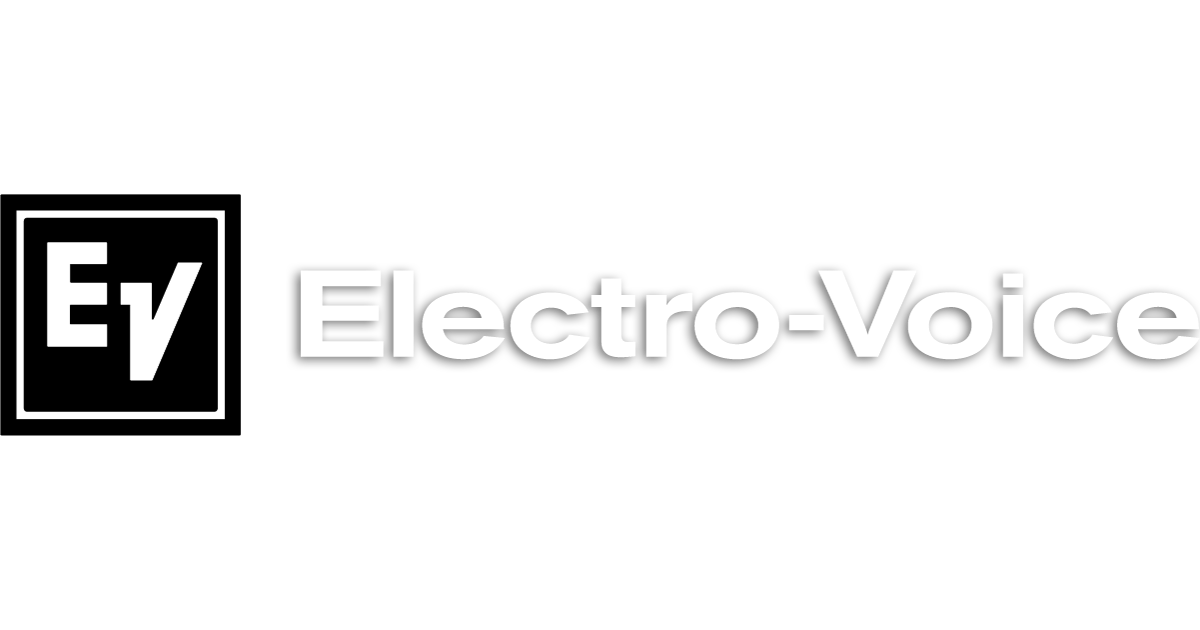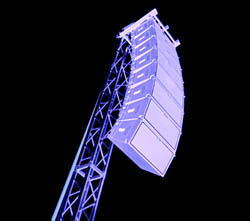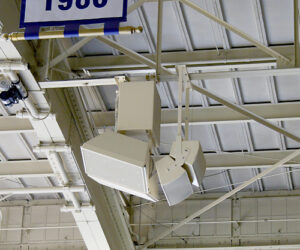As with all sizes of modular line array enclosures there are several designs in the “mini” genre, which we define as those with 7-inch “woofers”.
The simplest two-way systems have a single cone driver and a high-frequency driver, side by each. Some employ dual woofers, and those with a center high-frequency section that provides horizontal symmetry.
Quasi-three-way solutions use dual woofers, but cross one over earlier, so the other is the single source of mid-range, eliminating cancellations. True three-way designs operate separate low-, mid- and high-frequency drivers each in their own bands, but we don’t find many in designs with woofers this small.
A mini line array system makes an excellent center channel for vocals, adding clarity and image to left-right stereo systems. It’s common to find single enclosures used as front fill and under-balcony loudspeakers, where their wide horizontal dispersion is an asset.
Other tasks include rear channels for surround applications where pattern control in the lows is needed. Delay clusters of shorter mini arrays are helpful in large designs where vocal intelligibility is important. Party and meeting planners alike can appreciate lightweight systems that can quickly be deployed or struck.
Loudspeaker designers offer companion low-frequency enclosures to supply sufficient bass extension to be useful for music applications and to achieve full-range response. Companion “low boxes” are larger in size and become the top-most element in vertical arrays, as well as supplying mass for ballast and additional height in ground-stacked applications.
The use of line arrays in smaller venues is limited by weight and height. Miniaturized enclosures not only are less expensive, but also weigh less and can bend more rapidly without breaking their coupling due to their woofer size, making them better for smaller rooms.
The physics of coupling dictates a limit to the angle from one enclosure to the next, beyond which uneven coverage occurs. Line array enclosures with smaller cones allow greater vertical transition in a shorter height.
The vaunted pattern control provided by line arrays extends to the lowest frequencies as a function of the array’s length. Arrays lose pattern control below frequencies whose wavelengths are longer than their height. To achieve pattern control down to 200 Hz, a line array must be over 6 feet. With typical cabinet heights of 7 inches or less, this requires 10 mini line array cabinets.
The good news is that modern transducers are capable of higher SPL and mini line arrays of sufficient length can provide excellent sound reinforcement for smaller venues.
Mark Frink is Associate Editor of Live Sound International magazine.
As noted, “mini” line arrays are defined here as those with 7-inch “woofers” and smaller, while medium (or “compact”) line arrays – the biggest category – those with 8- and 10-inch woofers, are outlined here. Large-format line arrays, those with 12-inch and larger drivers, will be featured in the near future.
Be sure to take our Photo Gallery Tour of the latest mini line arrays.
And check out Everything You Wanted To Know About Line Array Technology, And Then Some to learn more about line array technology and terminology.
















